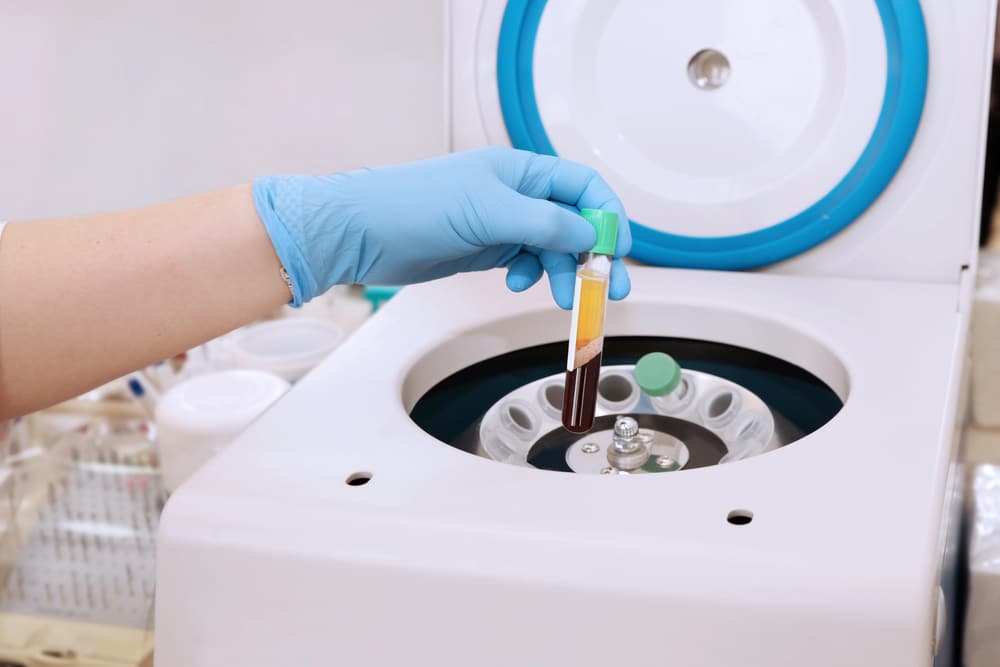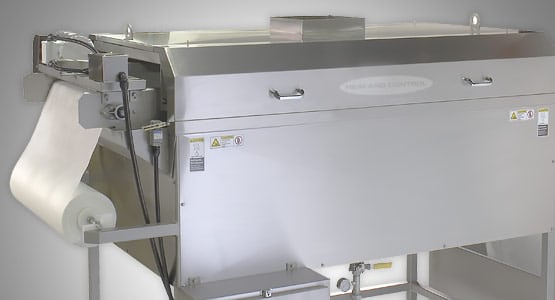According to Processing Magazine:
Cross-contamination is a serious concern in the food processing industry, especially for manufacturers that process foods “free-from” gluten or allergens. Facilities that produce both non-allergy-friendly or gluten-containing foods and free-from foods face even more challenges. Food products can’t be free-from unless the facility and processing equipment are as well — including air in the facility, which can contain dust from airborne food particles.
To ensure the safety of the food supply, the U.S. Food and Drug Administration’s Food Safety Modernization Act requires processing facilities to implement allergen controls. These are written procedures the facility must create and implement to control allergen cross-contact and ensure allergens are appropriately listed on the labels of packaged food products.
Food processors must also include and document actions to:
- Identify and correct a problem implementing a preventive control
- Reduce the likelihood the problem will recur
- Evaluate affected foods for safety
- Prevent those food products from entering commerce if they cannot ensure that the affected food is not adulterated
Dust collection systems for food processing facilities
The best way to prevent food particles from settling on surfaces and equipment where they can cross-contaminate is to collect them at the source while they are being processed and are still airborne. Common food dust collection challenges include cereal ingredients, spices, raw grains, egg shell dust, flours, corn starches, sugars and other sticky materials.
If a facility produces both free-from foods and standard food products for a more general consumer audience, industrial dust collection is the first line of defense in controlling cross-contamination. Without a dust collection system, food particles will settle on floors, equipment and other surfaces where they are difficult to remove. Traditional cleaning products like mops, brooms, compressed air and standard vacuum cleaners cannot effectively collect all of the contaminant-containing dust from the processing area. Even worse, they tend to kick the dust up into the air, redistributing it to other parts of the plant and contaminating free-from food products.
A highly engineered industrial dust collector is designed to meet the multiple and specific challenges that food processing facilities face. They capture airborne food particles where they are generated and do not allow them to settle. These dust collectors are a proven engineering control to filter dust-borne allergens and significantly reduce risk of cross-contamination.
Many factors go into the successful design and operation of industrial dust collection equipment. For example, determining the proper location for the dust collector is crucial. Another essential component of an effective design is the filter. Choose filter cartridges that are vertically mounted, have filter pleats that are wide and uniformly open to capture and release dust efficiently and that provide secondary HEPA filtration.
Placement of the dust collector
Often the dust collector is placed in the work area of a room in an attempt to collect ambient airborne ingredients. Unfortunately, this is an example of a poorly designed installation that will result in dust settling in the work area before reaching the collector, short filter life and a decrease in ventilation. This ambient collector placement makes cross-contamination from allergens and glutens with free-from products inevitable.
A better system for high-volume dust collection is one that captures food dust at the source using stainless steel pickup hoods at each production station. Whether hooked directly to batch mixers or high-velocity slot hoods behind weigh stations, these collectors pull airborne particulates into ducting and then into the dust collectors. It is ideal to place dust collectors in a separate location where dust can be effectively and safely discarded. Several other design features come into play to control cross-contamination from food dust including filter orientation, filter media and filter design.
Vertical and horizontal filter cartridges
Dust collectors with horizontally mounted filter cartridges have been used in the food processing industry for years. The problem with horizontal mounting in high dust loading applications is the dust does not get cleaned off the top of the filter. This causes the dust to blind at least one-third of the filter. Rotating the horizontal filters periodically helps dislodge dust, but also increases the chance of contaminants escaping into the air because the dust collector needs to be opened to do this.
In addition, because the incoming dust is dumped on top of the filters, there is no pre-separation of heavy or abrasive particles from the air stream. This situation can shorten filter life or, in spark-generating applications, pose a fire hazard because any spark entering the collector will come into direct contact with filter cartridges.
Vertically mounted filter cartridge housing designs incorporate a high, side-entry inlet with a series of staggered channel baffles that distribute the air and separate out larger particles, dropping them straight into the collection hopper. This reduces the load on the filters in heavy loading applications.
Vertical mounting also allows dust to release uniformly from the filter pleats since it does not have to fight gravity. This helps extend filter life and reduces routine release into the air because the filter compartment only needs to be opened when it is time to replace the filters. Bag-in/bag-out options are also available to further reduce exposure and the potential for cross-contamination during filter replacements.
A vertical filter design with a wide-pleated cartridge combined with a crossflow inlet delivers unparalleled performance in maintaining low pressure drop, which means consistent air flow to capture more allergens and other contaminants. The air used to reverse-pulse clean the filters is disbursed more evenly throughout the length of the filter cartridge for more effective use of the pulse energy. And, because the direction of the pulse is straight down through the length of the filter working with gravity, it forces light dust particles into the hopper and out of the air stream.
Ground peanuts for peanut butter processing
Why a wide-pleat filter?
Installing a high-efficiency dust collector with durable wide-pleat filters is the best solution for food processing environments, especially in critical applications where even the smallest amount of contamination is too much. Most dust collection cartridges use tightly packed media configurations. This means much of the media surface area is unavailable for filtering, allowing dust to remain trapped within the filter — even after pulse cleaning. Instead, look for wide-pleat filters that use synthetic bead-pleat separators to keep the pleats wide open. These separators prevent the media from folding over on itself, not allowing the dust to release from the filter cartridge, which causes the filter to plug. This design also allows use of the entire filter media because virtually all the media surface is exposed to the airstream. This type of filter design operates at lower differential pressures, experiences better dust release during pulsing and delivers extended filter life.
Secondary HEPA/iSMF filters
HEPA-grade integrated safety monitoring filters (iSMF) are typically recommended to provide backup protection for the dust collector and to allow release of the filtered air directly back to the workspace. When recirculating air downstream of the collector, the addition of a secondary HEPA filter system is recommended for multiproduct manufacturing facilities where cross-contamination is a concern. The HEPA filters provide backup protection as well as a final cleaning of the air before it goes back into the facility. In addition, some dust collector suppliers’ iSMF systems have been tested as an outlet isolation device/flame-front barrier in accordance with National Fire Protection Association (NFPA) standards. Verify the system has been properly tested by requesting the required documentation.
Measuring filter efficiency
Dust collector filter manufacturers typically use two methods to express filter efficiency. Primary cartridge filters are measured by gravimetric analysis, which is based on particle capture by weight. For example, filter efficiency might be stated as 99.995 percent on particles of 0.5 microns or larger by weight. The efficiency of a secondary HEPA/iSMF (which is a static-loading filter) may be expressed as a minimum efficiency reporting value, or MERV, based on a scale from 1 to 16, with MERV 16 being the highest efficiency. The MERV scale was developed for the HVAC filter market and does not consider the way a dust collector pulse cleans filters periodically when a dust cake builds up.
Food dust particles are often small and difficult to capture and retain. Grain dusts can be as small as 5 microns, starches as small as 3 microns and milled flour down to 1 micron. Be sure that filtration efficiencies exceed 99.99 percent at 0.5-micron particle by weight and secondary HEPA filters are rated up to MERV 16.
HEPA-grade integrated safety monitoring filter (iSMF)
Importance of testing dust
Filter media selection is determined by the characteristics of the dust, so it is important to have samples of dust from the application and facility tested by a reputable dust lab. A good dust collection equipment supplier will have an in-house dust testing lab and will offer testing at no additional cost. Dust test results help end users make informed decisions on the right air-to-media ratio and the correct cartridge media for the intended application. This is an important step to help mitigate cross-contamination of free-from products from other food particles.
Dust testing should include analysis of the particle size, shape and characteristics of the dust at the food processing facility. Tests can also examine the dust’s true specific gravity and identify if the dust is hydroscopic or moisture absorbent. Abrasion testing helps to determine potential wear of the filters, as well as the optimal design of dust-handling components like valves, inlets and ductwork. Explosibility testing that determines whether a dust is combustible helps to determine if additional design elements are required.
Combustible dust
Combustible dust explosions are a risk in many areas of a food manufacturing plant — including the dust collection system, if it is not properly configured and maintained. Having a dust collector reduces the chance of incidents in the facility from dust buildup on floors and other surfaces. But dust collectors must be equipped with proper deflagration protection to mitigate combustible dust incidents and comply with NFPA requirements.
Although many types of explosion protection exist, one example of a passive method is venting. An explosion vent opens when predetermined pressures are reached inside the collector, allowing the excess pressure and flame front from the deflagration to exit to a safe area. It is designed to prevent loss of life and minimize damage to the collector and the facility. Preventing the dust collector from blowing up in the event of a deflagration dramatically reduces the hazard.
A flameless vent is designed to install over a standard explosion vent and extinguish the flame front exiting the vented area, preventing it from escaping the device. This allows conventional venting to be accomplished indoors where it could otherwise endanger personnel or ignite secondary explosions.
The NFPA requires protection for the ductwork and processes upstream of the dust collector. Ducting should be equipped with dampers or isolation valves designed to minimize the risk of deflagration within these components. A flow-activated passive inlet isolation valve protects upstream work areas and processes from the propagation of flame and pressure through the dust collector inlet duct should a deflagration occur.
If deflagration does occur in a dust collector, the pressure wave will close the valve, preventing the passage of flame and smoke to areas upstream from the valve. The valve latches shut and must be manually opened. If activated, components of the valve may be damaged and a thorough inspection is required prior to returning the valve to service. Make sure the isolation device meets the latest NFPA standards.
Final thoughts
Producing free-from food products requires special handling during every step of the process. Extra care is needed in facilities that also process food for general consumption. It is critical to design the right system and select the best equipment for your specific application and food dust characteristics. A high-efficiency dust collector with vertically mounted, wide-pleated filter cartridges and a properly designed explosion-
protection system can significantly control airborne dust and help prevent cross-contamination issues in your factory. This important safety measure is vital to the quality of your food products, the well-being of your customers and your company’s reputation.









